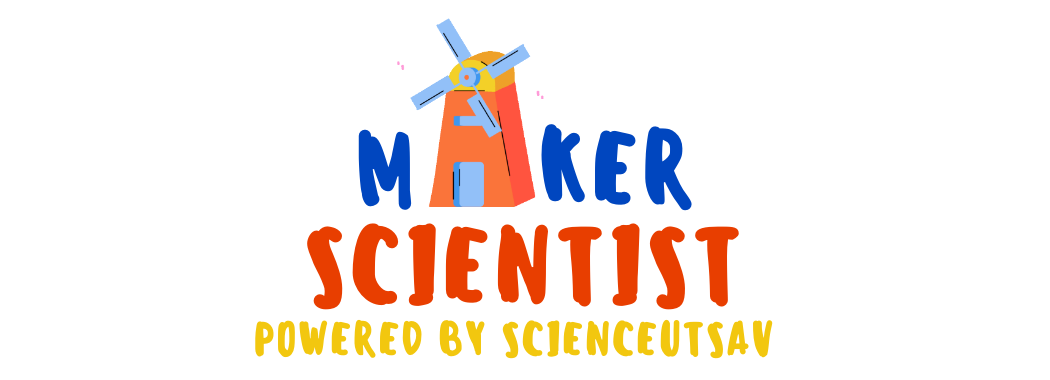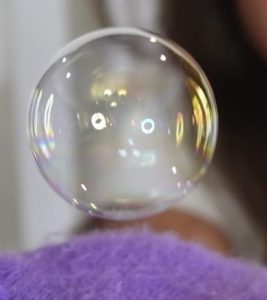-
0. Fun with Science - Air and its Application
- Objectives -21st Century Skills
- Materials Required
- Engage – Understanding Air and Wind
- Explore – Learn to make Bouncing bubbles
- Explore – Science of Flying
- Explore – Homemade Harmonica and Paper Pataka
- Explore – Measuring Noise Levels Around You
- Explore – Straw Whistle and six unique Ideas to Try
- Evaluate – Evaluate Your Understanding on Sound
-
1. Electricity and Circuit- Electronic Diya (Explorer)
Explore the basics of what electricity is and learn how to build a simple circuit by building an Electronic Diya!
-
2. Design an Electronic Candle (Explorer)
Understand how to use different kinds of switches and build a DIY Electronic Candle!
-
3. Design a Secret Candy Box- Understand How Refrigerator Door Works (Explorer)
Understand how different types of circuit- open and closed are different from each other by building a Secret Candy Box!
-
4. Build your own Virtual Circuit! (Explorer)
-
5. Ocean of Air - Sky Diver's Parachute (Explorer)
Understand some important properties of air and observe how air resistance can help defy gravity by building your very own Parachute!
-
6. Force and Friction - Pop gun Parachute (Explorer)
Understand what is air and how air pressure is useful by building a Pop Gun Parachute
-
7. The wind - Build a Table Fan (Explorer)
Strengthen your knowledge about wind and wind speeds ;build a DIY Table Fan on your own!
-
8. Wind Turbines ( Explorer)
-
9. Magic Shadows (Explorer)
Learn about how light can be easily blocked to create shadows and explore shadows with the Magic Shadow activity!
-
10. Properties of Light - Design Magical Greeting Card (Explorer)
Understand what light is, how it travels and what light is made up of and explore some materials that allows light to pass through them using the Magic Greeting Card activity!
- Objectives
- Engage- Magic Greeting Workbook
- Protected: Engage – What makes us see things?
- Protected: Explain – Types of materials
- Protected: Elaborate – Design a Magical Greeting Card
- Protected: Explain – Working of Magic Greeting
- Protected: Evaluate- Quiz on Types of Materials
- Protected: Assignment – Fun Time!
-
11. Science of Colors - Color Mixing Box Explorer)
Learn properties of light and explore how to play around with colours with the help of Newton Disc!
-
12. Concept Clarity - Quiz (Explorer)
Evaluate everything you've learned so far with the help of this fun and useful Quiz below!
-
13. E for Electricity (Inventor)
Introduction to electricity and electronics and how it works!
-
14. Build a Solar Car- Prototype
-
15. Solar Energy- Solar powered Car (Inventor)
Understand how to apply Solar Energy to your advantage and save the planet with the STEM Project- Solar Powered Car!
-
16. Sources of Energy- Solar Cap (Inventor)
Understand the various sources of energy that there are and learn about green and clean energy to be a Climate warrior using the STEM based Prototype- Solar Cap
-
17. Application of Wind Energy - Blow Car (Inventor)
Learn how air is different from wind and understand how to create and use wind to move objects using the STEM prototype- Blow Car!
-
18. Balloon Powered Boat - Build a Prototype (Inventor)
Understand how air pressure can influence movement of objects due to thrust
-
19. Mechanical Energy: Design a Rubber Band Powered Sail Boat (Inventor)
Discover how to make the Wind Powered Sail boat go faster using mechanical energy in the STEM Project- Sail Boat!
-
22. Design a Lantern Circuit (Inventor)
Design a STEM based prototype of an artificial light source all on your own!
-
21. In search of light (Inventor)
Know all about light and what it is made up of and learn how to use light to our advantage!
-
23. Build a Torch Light (Inventor)
Learn how to design and build your own DIY Torch Light using this STEM Project!
-
24. Design Thinking with Torch Light (Inventor)
-
20. Sail Boat - Design Thinking (Inventor)
Understand the use of Science in your everyday and discover its importance with the help of STEM based projects and prototypes!
Explore – Learn to make Bouncing bubbles
Bouncing Bubbles
Keywords: Surface tension, Elastic nature
Materials Needed: Liquid detergent, Bowl, Woollen Glove and Water, Glycerin
What we will learn:
- What is the bubble made of?
- What is present inside a bubble?
- How are bubbles formed?
- Why are they round?
- Why do you see so many colours on the bubble?
- Why do bubbles pop?
- How can you make your bubbles last longer?
- Why do they bounce on your woolen glove?
About the project: Bubbles can bounce. Learn what makes them bouncy.
Procedure:
- Add 2-3 tablespoons of dish soap into a bowl
- Add 9-10 tablespoons of water to the bowl
- Stir well but gently. Try not to let foam or bubbles form while you stir.
- Put the straw (with the end cut off) into the mixture and blow bubbles until the cup or bowl overflows.
- Try holding the bubble in your hand, it will break
- Put onto the woolen glove provided.
- Watch the magic of how they stick together to make a bigger bubble.
- Measure 1 teaspoon of glycerin and add to the soap solution. Blow a bubble now.
- Now try holding the bubble.
- Watch the bubble bounce.
What is the bubble made of and what is present inside a bubble?
A bubble is just air trapped between films of soapy water. A thin layer of water is present between two layers of soap molecules, The three layers work together to hold air inside.
How are bubbles formed? Why are they round?
Water molecules like to stick together. The outer layer of water acts as if it is stretched. This property is called surface tension.
Bubbles are round in shape and not any other shape because it needs the least energy to have this shape. Any other shape would require more energy.
Bubbles don’t form very well in normal water. But when soap is mixed with water, this surface tension becomes less, and bubbles are easily formed. Just like a balloon, the surface of the bubble grows big when air is blown inside it.
TRY THIS!!!
Why do bubbles stick together? Since a bubble tends to minimize its surface area, bubbles join together to share one common wall. Three bubbles meet at the center, always at an angle of 120 degrees. When bubbles are about the same size, they form perfect hexagons (six-sided figures).
Why do you see so many colours on the bubble?
A bubble gets its colour from the light waves reflecting between the soap film’s outer and inner surfaces. The distance between the layers gets smaller as the water evaporates, and the colors change.
Why do bubbles pop?
The bubbles pop when the water between the soap films evaporates.
Why do they bounce on your woollen glove?
When a bubble hits your hand it pops. But when it falls on your glove, you can hold it and bounce it.
Bubbles are very thin films of soap, held together by surface tension. Oil or tiny particles on your hand affect the film, popping it at once, but the soft, clean fibers of your glove do not and the bubbles bounce well.
How can you make your bubbles last longer?
Adding a teaspoon of glycerin makes the walls of the bubble stronger. Also, If you want, you can cover the bubble solution loosely and let it rest for 24 hours. This gives the solution time to age and you can blow big and strong bubbles that don’t pop easily.

